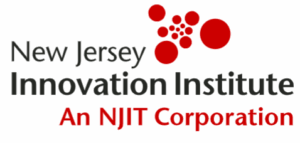Bridging Academia and Industry: Michael Johnson's Vision for Innovation in Higher Education
How NJII is Transforming the Gap Between Research and Real-World Application
In the bustling corridors of higher education, where brilliant minds generate groundbreaking research behind institutional walls, a persistent challenge has emerged: how do we translate academic innovation into real-world impact? Michael Johnson, President of the New Jersey Innovation Institute (NJII), has spent his career addressing this critical gap, and his insights offer a roadmap for universities nationwide grappling with similar challenges.
"Research over the last 50 years has declined significantly in private industry," Johnson explains from his office in Newark. "We're focused now on incremental research—iPhone 16 is essentially the same as iPhone 11. It's not the way it used to be, and it's not coming from private industry. As a country, we have to lean into higher education."
The Academic-Industry Divide
Johnson's perspective is shaped by a unique career trajectory that spans both academic research and entrepreneurship. With a bachelor's degree in biology from Muhlenberg College and a Ph.D. in Environmental Sciences from Rutgers University, he has held positions at Johnson & Johnson and NASA before founding Visikol, an advanced cell culture and imaging contract research service. Under his leadership, Visikol attracted all 20 of the top pharmaceutical companies as clients and oversaw more than 200 discovery programs before being acquired by Swedish biotech company BICO in 2021. Following the acquisition, Johnson served as Chief Commercial Officer at MatTek Life Sciences, overseeing international sales, marketing, and business development.
This entrepreneurial journey—growing from "two of us in a closet at Rutgers University" to 45 employees—gave him firsthand insight into the challenges of commercializing academic research.
"Higher education faces structural challenges in connecting with external partners," Johnson observes. "Academic institutions naturally foster deep, focused research, but the systems designed for scholarly excellence don't always align with industry timelines and needs. You have incredible intellectual capital, world-class resources, and groundbreaking discoveries, but translating that value to broader applications requires intentional bridge-building."
NJII exists as the solution to this problem—a separate 501(c)(3) organization that operates independently from NJIT but leverages all its academic resources. "It seems mundane, but it's critical to being outside of academia while moving at the speed of business," Johnson explains.
The AI Revolution and the White-Collar Apocalypse
Perhaps nowhere is this academic-industry bridge more crucial than in artificial intelligence. Johnson's observations about AI's impact on the workforce are both sobering and urgent. He describes what he calls the "white-collar apocalypse"—the automation of jobs that exploded over recent decades.
"My grandpa worked in a factory in Newark 60 years ago with 500 people and three white collar workers: a Treasurer, a President, and a General Manager," Johnson reflects. "With computers and the internet making white collar jobs more efficient, somehow we got more white collar workers. Now AI is changing that dialogue—why did we invent all these jobs and do we actually need them?"
This shift has profound implications for higher education. Johnson poses a challenging question: "The job that my college freshman has doesn't exist yet, and by the time they finish their degree, is that job even going to exist anymore?" This reality is forcing institutions to reconsider fundamental assumptions about education timing and structure.
"Why do we do four years? Why don't we do one year every 10 years, upskilling continually, versus learning something that might be totally irrelevant in four years?" Johnson asks. These are conversations that haven't fully begun in higher education, but Johnson believes they're inevitable.
Practical Solutions for Small and Mid-Size Businesses
While others focus on building data centers or courting high-profile AI startups, Johnson has identified a different opportunity: helping small and mid-size businesses adopt AI tools. "There are plenty of 100 or 200-person companies that know they have problems that can be addressed by AI, but they have no idea where to get started," he explains.
NJII's approach is pragmatic and cost-effective. Rather than competing with expensive consulting firms like Deloitte or Accenture, they offer targeted assistance that meets businesses where they are. "We're coming in and saying, 'No, there's a solution that's $3 a month—use this,'" Johnson describes, recounting how they helped a Fortune 100 company avoid a seven-figure project with a simple, affordable alternative.
The organization has developed training programs that focus on practical productivity gains. "We're teaching companies to save an hour here, an hour there, becoming 10-15% more productive as an organization," Johnson explains. These seemingly modest improvements can have significant competitive advantages in rapidly changing markets.
Rethinking the Academic Research Model
Johnson's vision extends beyond AI adoption to fundamental questions about how academic research creates value. He advocates for what he calls "translational research"—work that bridges the gap between laboratory discoveries and market applications. 
The NJII model demonstrates this approach through strategic partnerships. For example, their collaboration with Picatinny Arsenal, part of the Department of Defense, required building a 20,000-square-foot pilot facility for testing advanced manufacturing equipment. "That's something NJIT can do research-wise, but signing a lease and building out a building is something you can't do quickly in higher education. But we can do it incredibly quickly—in a few months," Johnson notes.
This agility allows academic institutions to engage with industry partners on their timeline while maintaining the intellectual rigor of university research. It's a model that other institutions could adapt to their regional needs and industry partnerships.
The Network Effect and Mentorship
Drawing from his own experience with mentors throughout his career—from middle school robotics teachers to college football coaches to Ph.D. advisors—Johnson emphasizes the critical role of networks in innovation. "Very few people even know someone who started a company, successful or unsuccessful. This journey is foreign to most people," he observes.
NJII operates a large mentoring network specifically designed to address this gap. Johnson encourages aspiring entrepreneurs to "reach out to wealthy, successful people nearby and just ask for coffee, ask to learn."
Yet he notes that few people take this advice, often because "they don't want to admit they're not the best at something."
For higher education leaders, this insight suggests the importance of building formal mentorship programs that connect students and faculty with industry professionals who have navigated the commercialization process successfully.
Preparing for Uncertainty
As Johnson looks ahead, he acknowledges the challenges of planning in an environment of rapid change. "Today we are experiencing a lot of change at both the federal and state level as well as technological change and organizations are highly vulnerable to being disrupted. It is the organizations that are nimble which are able to thrive during these types of changes and for NJII, we are taking lots of small bets in multiple industry areas to diversify.”
A Model for the Future
Johnson's work at NJII offers a compelling model for how higher education can maintain relevance and impact in a rapidly changing world. Dr. Forough Ghahramani, Assistant Vice President for Research, Innovation, and Sponsored Programs at Edge, affirms this potential: "We are thrilled to have Michael Johnson as President of NJII. His exceptional record, from translating biotech breakthroughs at Visikol to driving commercialization at MatTek, brings a powerful new vision for innovation in New Jersey. Under his leadership, NJII's commitment to partnering with networks like Edge, advancing AI/EdTech startups, and strengthening statewide collaboration promises to elevate our region's innovation capacity."
By creating organizational structures that combine academic rigor with business agility, institutions can better serve both their research mission and their regional economic development goals.
The key insight from Johnson's approach is that the future of academic innovation may not lie in choosing between ivory tower research and commercial application, but in creating new organizational models that excel at both. As he puts it, "We can't do everything on our own," but through strategic partnerships and clear focus on practical problems, academic institutions can multiply their impact far beyond traditional boundaries.
For higher education leaders grappling with similar challenges, Johnson's experience suggests that the solution isn't to abandon academic values, but to create new structures that allow those values to flourish in partnership with industry needs. In an era of rapid technological change, such partnerships may not just be beneficial—they may be essential for institutional survival and societal impact.


